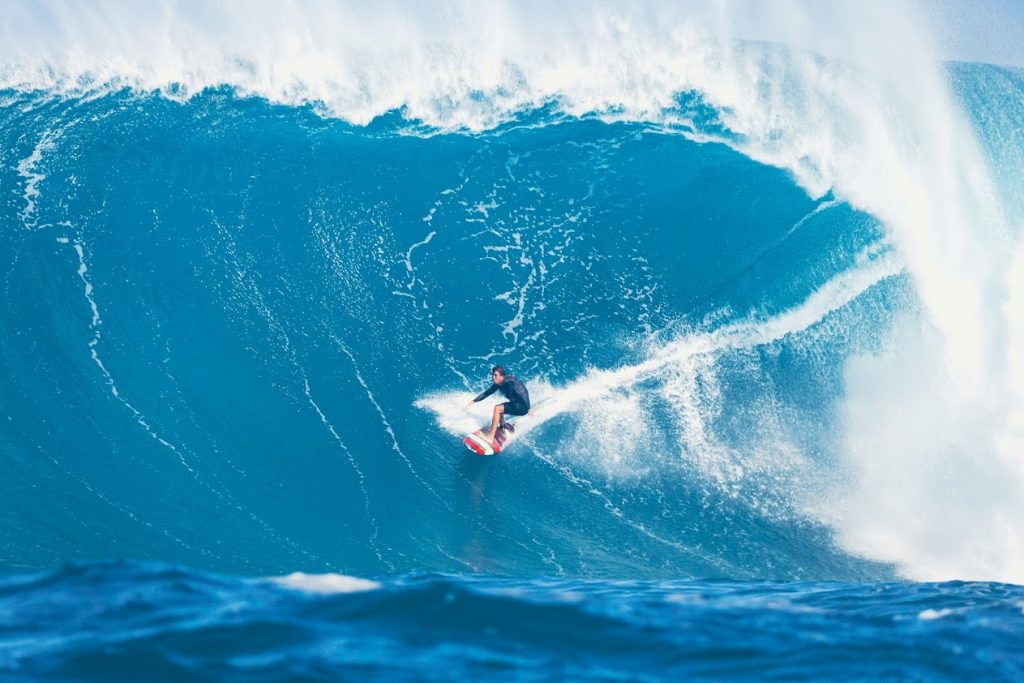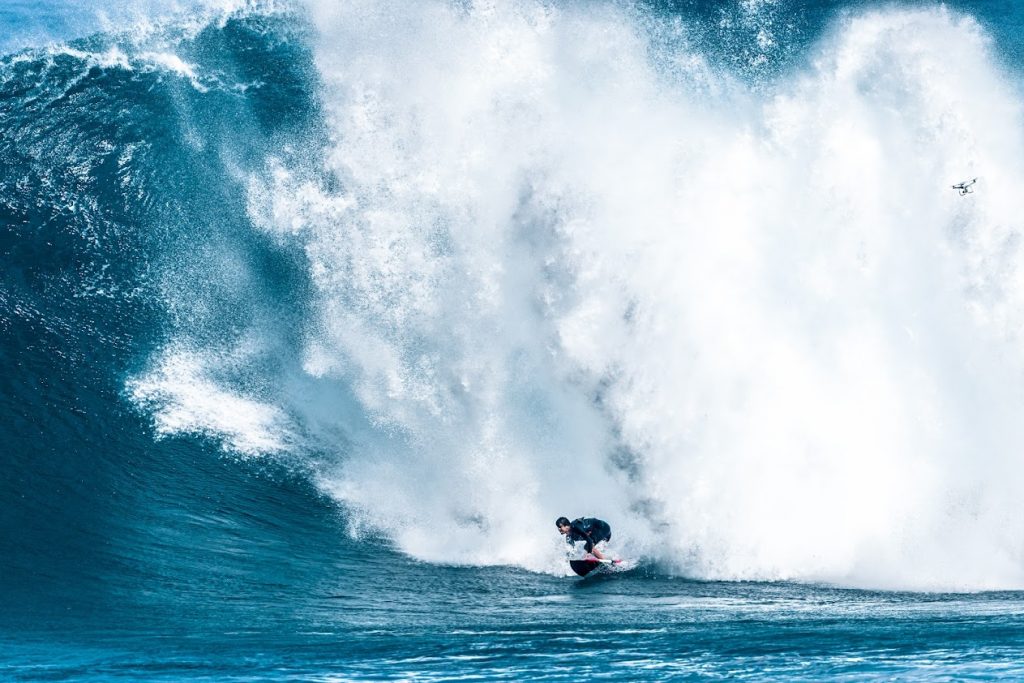Big wave surfers flocked to Maui to delight the crowd at Jaws
Monster waves don’t happen often at Peʻahi, only during the biggest winter swells created by distant storms in the north Pacific. But when the big swells arrive at Maui’s world-famous break, also known as Jaws, they lure big wave surfers from around the globe and large crowds to “ooh and aah.”
That was the case on Wednesday when the Jaws surf report rated the waves as XXL, at 30 to 40 feet.
All morning, expert surfers entertained onlookers who watched from along the shoreline or at the top of a bluff about a quarter to a half mile away.
At around 11 a.m., a surfer on a red board dropped into a massive wave to the delight of the crowd — until the wipe out. Groans filled the air as the surfer disappeared from view, appearing to be gobbled up by crashing water.
Two rescue Jet Skis waiting on the deep area west of the main break immediately searched for the surfer. He was located in less than a minute. The surfer was able to lift himself up onto the rescue sled to be pulled out of the danger zone, where the waves were breaking with forceful whitewater. But gone was his board.
From the shore, people wondered who the surfer was. From a distance, he seemed to be okay.
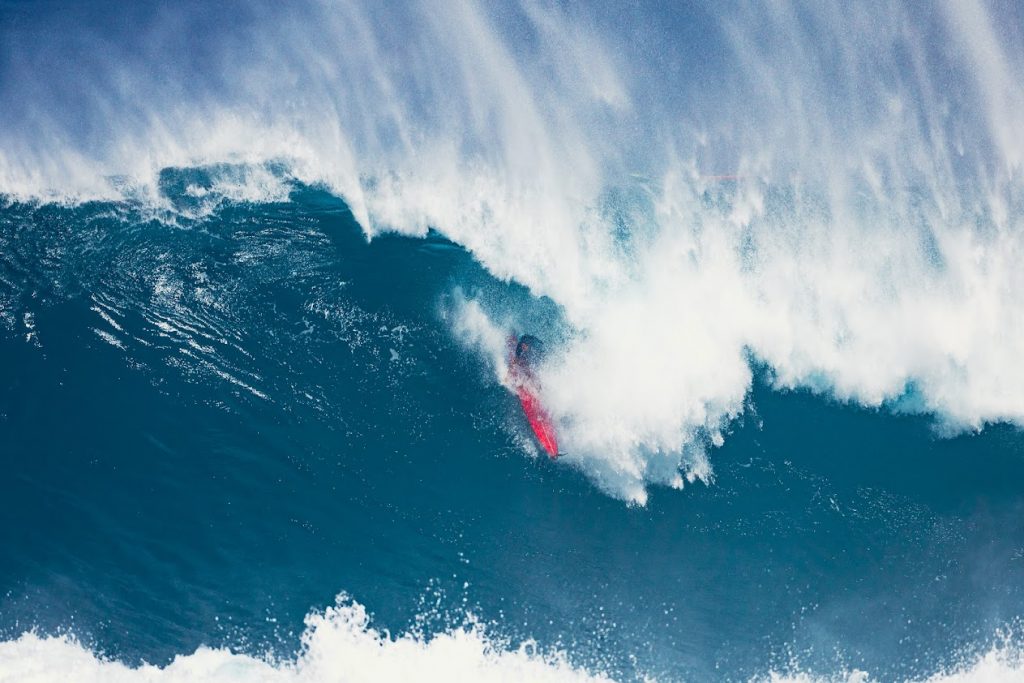

Big wave surfers live for days like this on Jaws. After the surfer was towed to safety, more surfers dropped in.
About 10 minutes later, a red and white piece of fiberglass came floating to shore with the energy of the waves, stopping on black rocks on the left side of the shoreline. The item, about 3 feet long with three fins, was the back of the mystery surfer’s board.
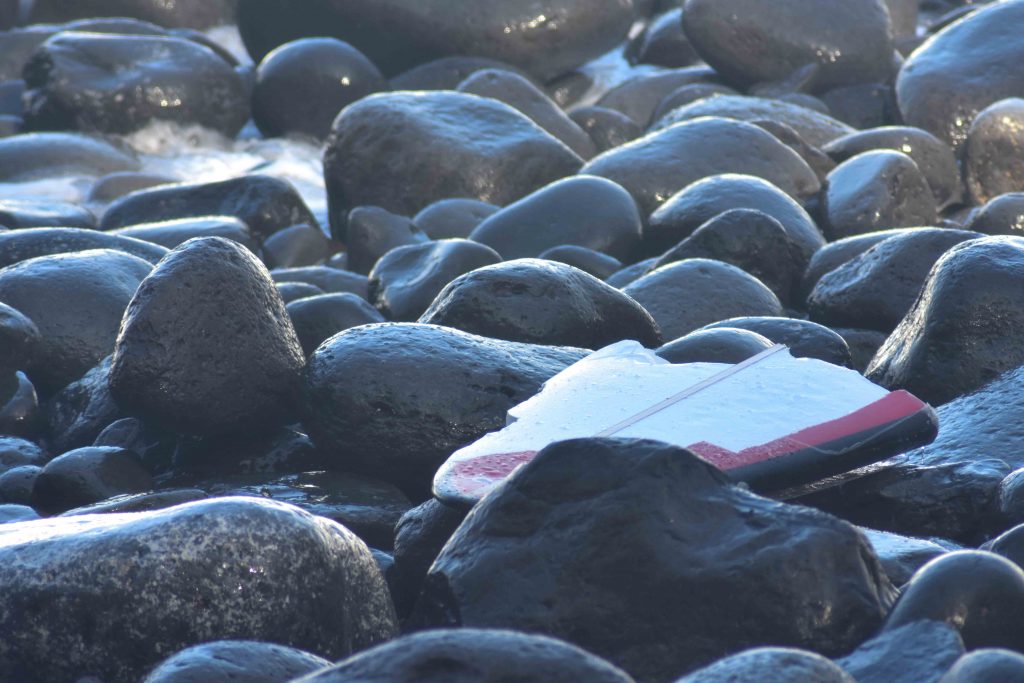
It had broken in at least two pieces, apparently being smashed on the coral reef from the weight of the wave’s water. A Surfer Today article said that according to physicists, a breaking wave can apply a pressure of between 250 to 6,000 pounds per square foot, depending on its height. And this was a big wave.
Fred Trauerts of Pukalani spied the piece of surfboard and quickly walked down an embankment and over the slippery rocks to retrieve it, just beating out a guy from Germany who was en route to do the same thing.
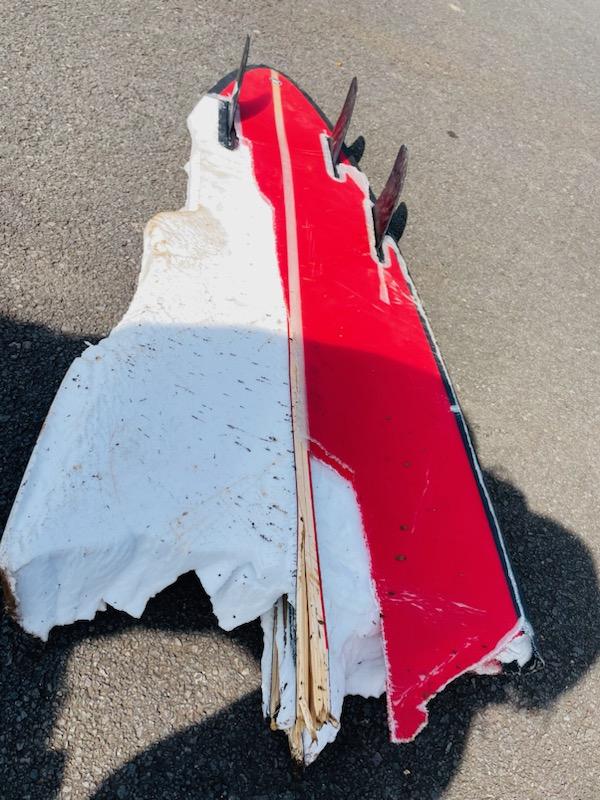
Another 10 minutes or so passed before a big piece of red and white fiberglass also was pushed by the waves into the shore, but on the right side of the shore.
This time, Valentin Thibault from a town outside of Marseilles, France, was the first to retrieve it. He had traveled to Maui just before Christmas to shoot video of humpback whales and the waves of Jaws with his vintage camera that produces grainy footage that looks like it is more than a century old. He hopes to make a film.
“These monster waves are so beautiful,” he said.
Trauerts and Thibault were among the visitors and residents who either walked down the roughly 1.5 mile dirty, muddy road or bounced along in a 4-wheel drive vehicle navigating all the big ruts, which on Wednesday destroyed the side of one person’s truck on a particularly steep portion. A few also came down on four-wheelers, motorbikes or mountain bikes.
Jaws was named by surfers John Lemus, John Potterick and John Roberson in 1975, after the Hollywood blockbuster “Jaws.” And in 2001 at Jaws, Laird Hamilton, Dave Kalama and Darrick Doerner served as stunt doubles for James Bond in the opening sequence of the film “Die Another Day.”
So why do waves break so big at Jaws?
According to Sean Collins with Surfline, “The ocean floor [at Jaws] is incredibly unique with an extremely deep trench close to shore, which was dug out from massive amounts of freshwater streaming out of Peʻahi valley over thousands of years. The water depth in the trench is more than 100 feet deep – right next to a shallow reef which is about 20 feet, which is where the waves break.”
The secret to the big waves is the water depth.
“Wave energy passing over the deep water of the trench bends in aggressively towards the shallow water of the reef This combination of extra energy converging over the reef helps the waves to become three to five times larger than their original height in deep water.”

Thibault was thrilled to get the big piece of the 10 foot 2 inch red board with a Hurley sticker, although he said it would not go home with him to France.
“Cost too much in baggage,” he said.
Instead, he plans to give it to his friend who is putting him up in a house in Pāʻia: “It would be a nice gift for him for his hospitality.”
But local Trauerts said he planned to try to track down the owner of the surfboard.
“I want to give it back to him,” he said. “I’m sure Kai Lenny and the guys know who it is.”
Trauerts had the tail with the fins. He said they are likely custom and pretty pricey, perhaps $1,200 or more. “I’m sure he’d like them back,” he said.
Upon inspection of the board, the number 10-2 is written on it next to “Matahi.”
A little sleuthing on social media appears to identify the surfer as Matahi Drollet, a pro surfer who grew up in Tahiti in French Polynesia, where he surfed the famous break Teahupoʻo. His Jan. 4 Facebook post has a picture of him surfing Pipeline on O’ahu.
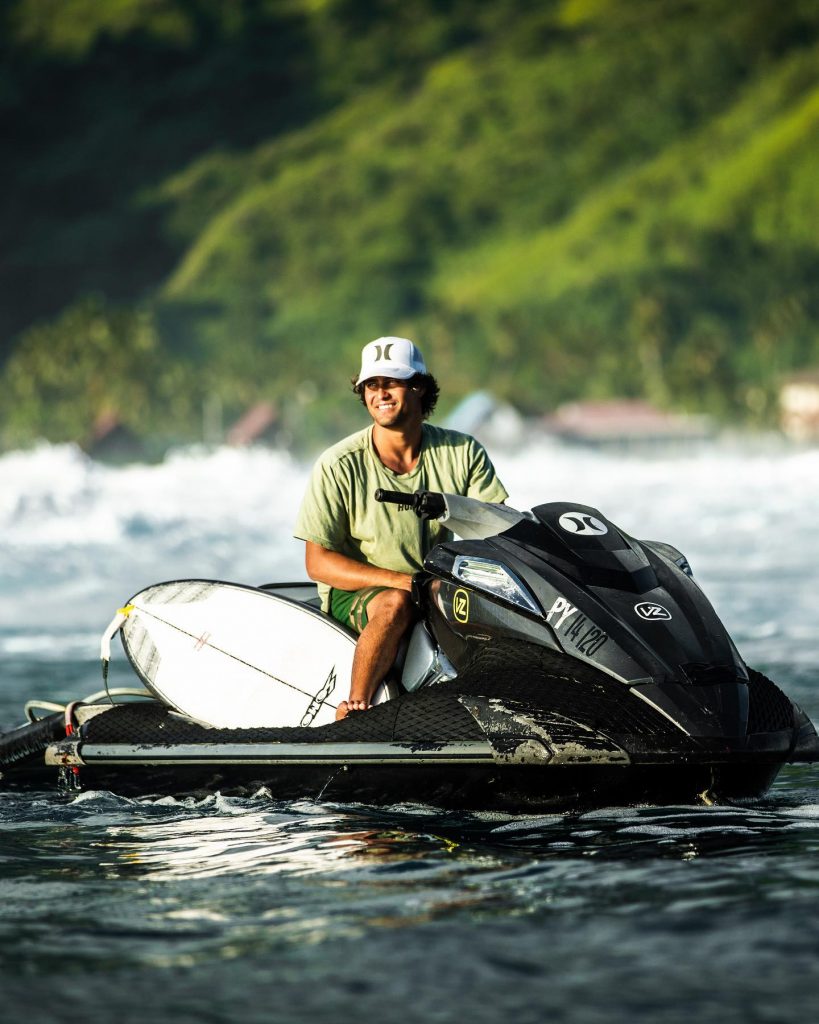
Drollet is the younger brother of Manoa Drollet, a famous surfer who has been in several movies as himself (Liftoff, Imagine, Wow, Out There).
Trauerts said he also wants to track down the surfboard owner because “it is bad luck to take somebody else’s fins.”
Wednesday night, Trauerts got a response from the Instagram message he sent Matahi Drollet asking if he was at Jaws on Wednesday.
“yes bro I was. Red board with hurley sticker,” Drollett wrote.
When asked if he broke his surfboard, Drollett responded: “yes bro unfortunately.”
Trauerts wrote that he got the board off the rocks and would give it back to him.
Drollett said: “sick thank you so much” with two prayers and a heart emoji.
Then he asked: “the fins still good?” with two crying emojis, to which Trauerts wrote: “3 are Lol.”
Trauerts couldn’t give all four of Drollet’s fins back. One appears to be lost to the sea forever.





